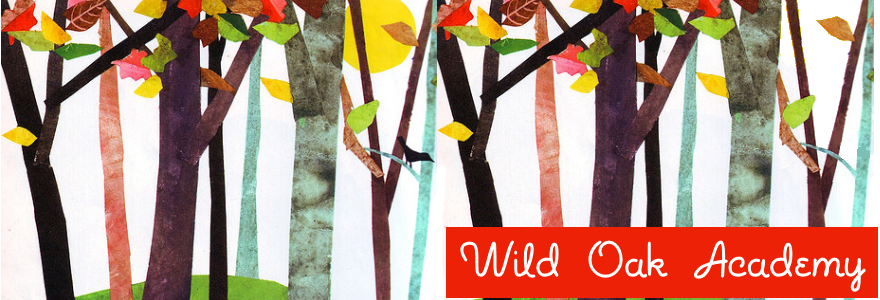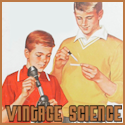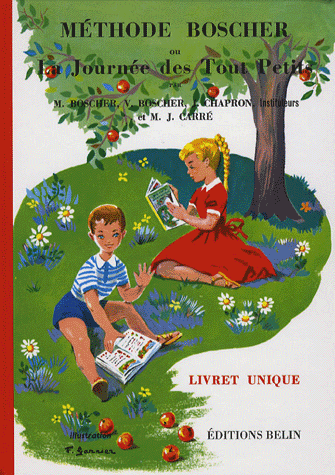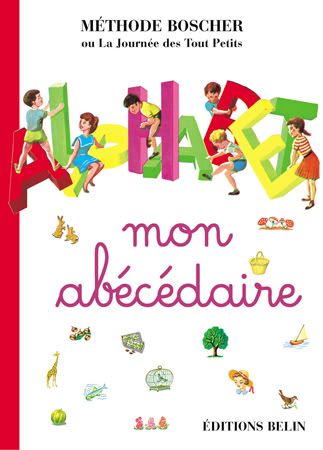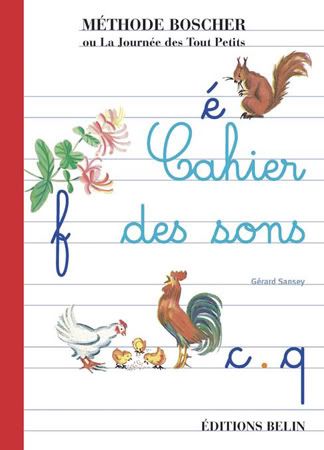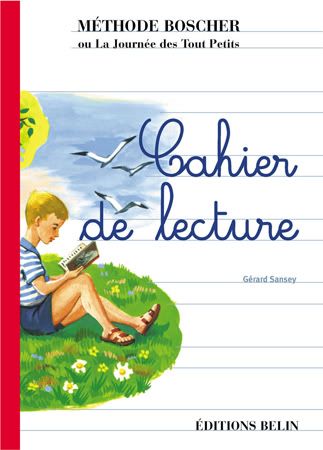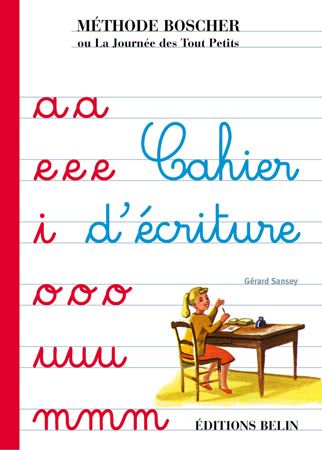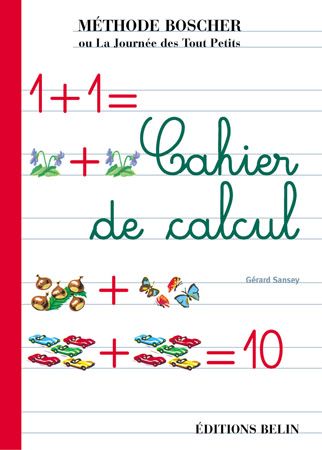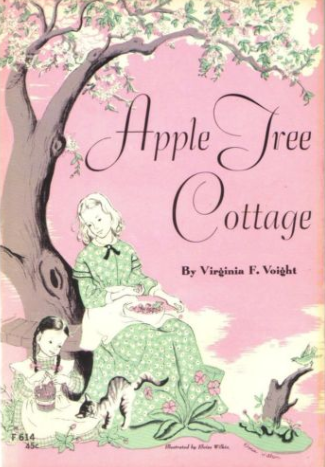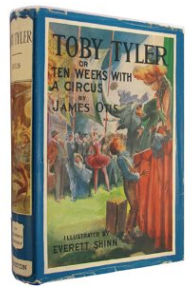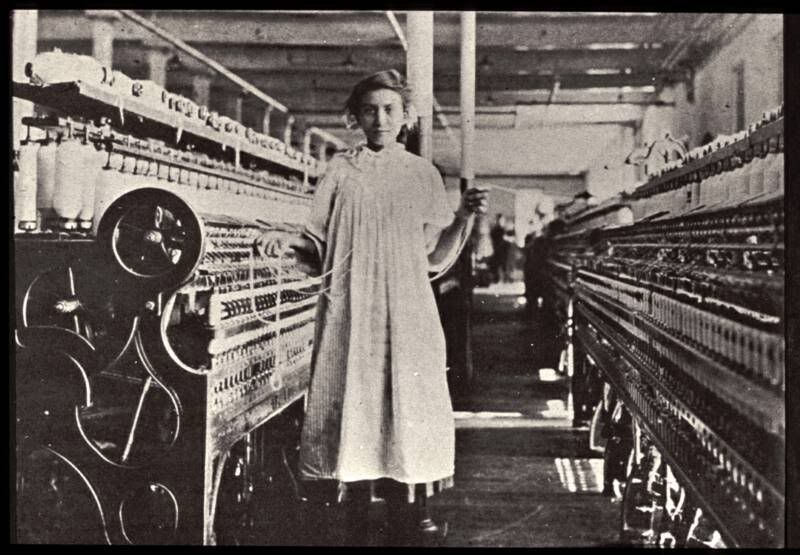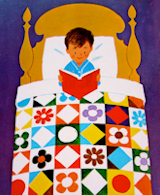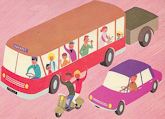M. has decided that she would like to begin to learn French this year (which is fortunate for me, since I know at least a little of the language!). After some research, I settled on Galore Park's So You Really Want To Learn French as her primary text for the subject. However, I knew that I'd also want to supplement with some French texts intended for French children learning to read the language. Additional research led me to two different sets of books: Méthode Boscher and Daniel et Valérie, both of which are time-proven and use the syllabic method of reading (a very brief discussion of syllabic phonics vs. the "global method" can be found on TWTM here.). While both texts are a touch old-fashioned, in my opinion the charm of the illustrations more than compensates.
Here are the resources available for Méthode Boscher:
Méthode Boscher ou La Journée des Tout Petits is the primary text for the illustrated syllabic method of reading and writing first developed by Mathurin Boscher in 1906. The two books shown above have both been reprinted by Belin and are identical, with the exception of the illustrations. The "green version" was illustrated by Jacqueline Duché in 1915 (more about her work here) and the "red version" was illustrated by François Garnier in 1945. Preview and/or download the entire "red version" book here at Scrib'd. The "red version" is available for purchase from Amazon.fr, while the "green version" is available from Amazon.ca.
Méthode Boscher mon abécédaire is an alphabet book which also contains simple vocabulary. Preview and/or download the entire book at Scrib'd. Ages 4+.
Méthode Boscher Cahier des sons is the pre-reading workbook of syllabic sounds. Preview and/or download the entire book at Scrib'd. Ages 4+.
Méthode Boscher Cahier de graphisme is the pre-writing workbook which contains exercises that allows the child to master the movement of the letters before moving on to the copybook below. This is especially helpful if you'll be using a fountain pen for cursive. Preview and/or download the entire book at Scrib'd. Ages 4+.
Méthode Boscher Cahier de lecture is the primary workbook for the main text Méthod Boscher ou La Journée des Tout Petits. Preview and/or download the entire book at Scrib'd. Ages 5+.
Méthode Boscher Cahier d'écriture is a cursive copybook which contains both uppercase and lowercase letters. Each page has a corresponding page in the primary text, Méthod Boscher ou La Journée des Tout Petits. Preview and/or download the entire book at Scrib'd. Ages 5+.
Méthode Boscher Cahier de calcul is a math workbook which contains numbers from 0 to 100, plus simple addition and subtraction. Preview and/or download the entire book at Scrib'd. Ages 5+.
Leveled Méthode Boscher readers online:
- Book 1: Paco, le petit matelot
- Book 2: [ Missing ]
- Book 3: Paco a trouvé un ami
- Book 4: Sur le bord du lac
- Book 5: Une promenade dans la campagne
- Book 6: Une journée bien remplie
Labels: French
2011-12 U.S. History: First Semester Reading (Westward Expansion)
0 comments Posted by Kristine at 8/30/2011 04:09:00 PM1. Lewis and Clark: Blazing a Trail West by John Burrows (nonfiction)
2. Diary of an Early American Boy: Noah Blake, 1805 by Eric Sloane
3. Hello, the Boat! by Phyllis Crawford (1939 Newberry Honor book)
Combining accurate information about those days of tall tales and tall language with a truly spontaneous story, "Hello, the Boat!" recreates the life of young people of another day in a humorously realistic fashion. Remote from great national events, the narrative is extremely simple yet vivid, absorbing because of its truth." (via GoodReads)
We'll be supplementing Hello, the Boat with the excellent nonfiction Flatboat Days on Frontier Rivers by James McCague (part of the Garrard History Series). Two additional options I considered were By Wagon and Flatboat by Enid La Monte Meadowcroft (also very good, according to TruthQuest) and Flatboats and Wagon Wheels by Mildred Comfort.
4. Boy with a Pack by Stephen Meader (1940 Newberry Honor book)
"Seventeen-year-old Bill Crawford refused to be licked by the "hard times" of 1837. Putting every cent he owned into a tin trunk full of "Yankee notions," he set out afoot from New Hampshire for the Ohio country. His adventures on the road, as he crossed Vermont, York State, and Pennsylvania and moved southward through Ohio, furnished abundant tests of his courage and character. A crooked Vermont horse dealer who nearly murdered Bill for his trade-goods; a bullying Erie canal boat captain who hired him as a driver; and a hard-riding Virginia slave-catcher shadowing the Underground Railroad are vivid personalities in the story. Like other popular books by this author, Boy With A Pack is a horsy story. It is flavored with the racy pungency of stagecoaches and tavern stables, the brawl and bustle of the old Erie Canal, the excitement of backwoods trotting tracks, and the dusty plodding of westward migration in full tide a hundred years ago."
5. Apple Tree Cottage by Virginia Frances Voight
"Susan and Candace Warren with horse, Bucephalus, roam the countryside during the summers in their van so their artist father can paint. This summer, their father is too sick to continue to travel and they end up in Apple Tree Cottage, vacant home of Peter Birch, a teen on the run from his evil master, Mr. Snipper. The Warren girls have always wanted to live in a real home and this one comes with neighbors about Susan's age, Janet and Phil Grant. The kids discover Peter's hiding place and they all become friends over the summer while keeping Peter's secret. Candy, a spunky child, who goes "cheerfully about the adventure of living, blissfully untroubled by the state of her clothes," takes food and messages to Peter, and soon the motherless Warrens and orphan Peter grow as fond of each other as if they were true siblings.
They also become involved in the burglary case of Mr. Bramble, a rich patron of the Warren's father. Susan witnesses the robbers escaping the night before the Warrens settle at Apple Tree Cottage. Candy spots a silver William Penn porringer in the road, part of the robbers' loot, which she uses to feed her new kitten Winkie. There are descriptions of pastoral life in the mid-1800's, the countryside, chores, cooking, and picnics and an account of the railway and city when Susan travels with Phil on the quest to earn money for rent ($2 a month) and necessities. Being the talented daughter of an artist, she is looking for work with the famous Godey's Lady Book to paint fashion plates in watercolor. A simple but delightful read." (Source)
6. The Story of Davy Crockett by Enid LaMonte Meadowcroft. We be supplementing this with chapters from Hunters Blaze the Trails by Edith McCall (Frontiers of America Series, reprinted by Royal Fireworks Press), and When Mountain Men Trapped Beaver by Richard Glendinning (Garrard History Series; non-fiction). I will also be reading aloud excerpts from Journal of a Trapper : or, Nine years in the Rocky Mountains, 1834-1843 by Osborne Russell (online here) for a true, first-person account of life as a "mountain man."
7. Lyddie by Katherine Patterson - My plans for this book are posted here.
8. The Great and Only Barnum: The Tremendous, Stupendous Life of Showman P. T. Barnum by Candace Fleming (nonfiction; corresponding film: P.T. Barnum)
9. Toby Tyler, or, Ten Weeks with a Circus by James Otis (Free for Kindle)
"Toby Tyler tells the story of a ten year-old orphan who runs away from a foster home to join the traveling circus only to discover his new employer is a cruel taskmaster. The difference between the romance of the circus from the outside and the reality as seen from the inside is graphically depicted. Toby's friend, Mr. Stubbs the chimpanzee, reinforces the consequences of what happens when one follows one's natural instincts rather than one's intellect and conscience, a central theme of the novel." (Source)
We'll be supplementing Toby Tyler with excerpts from Sawdust and Spangles: Stories and Secrets of the Circus, a 1901 memoir by W.C. Coup. (There is also a picture book version of Sawdust and Spangles by Ralph Covert; Coup was a contemporary of P.T. Barnum.) Additionally, we may read Circus Days Under the Big Top by Richard Glendinning (Garrard History Series) and select articles from Bandwagon (The Journal of the Circus Historical Society). We'll wrap up our unit by watching the Disney film "Toby Tyler".
10. On to Oregon by Honore Morrow (Film: "Seven Alone") and Tree Wagon by Evelyn Sibley Lampman OR The Pioneers Go West (Landmark Series) by George R. Stewart. I'll be reading aloud excerpts from Prairie Traveler: A Handbook for Overland Expeditions, with Maps, Illustrations, and Itineraries of the Principal Routes between the Mississippi and the Pacific by Randolph B. Marcy (1859). Marcy’s Prairie Traveler was an indispensable guide to thousands of American overlanders in their arduous treks to California, Oregon, Utah, and other western destinations, it's also very interesting reading!
Labels: U.S. History
1st Semester: Sentence Writing, 2nd Semester: Paragraphs
Six Traits of Writing Posters - Modify these to make my own *Move this to writing program page
1. Review the Parts of a Sentence (Parts of Speech).
- Glencoe Grammar and Language Workbook, Grade 7 (Free!)
- Unit 1: Subjects, Predicates and Sentences
- Unit 2: Nouns
- Unit 3: Verbs
- Unit 4: Pronouns
- Unit 5: Adjectives
- Unit 6: Adverbs
- Unit 7: Clauses and Complex Sentences
- Unit 8: Verbals (Participles, Participial Phrases, Gerunds and Gerund Phrases, Infinitives and Infinitive Phrases)
- Unit 9: Subject-Verb Agreement
- Unit 10: Diagramming Sentences
- The Art of Styling Sentences by Ann Longknife, Ph.D. and K.D. Sullivan
- Chapter 1: The Sentence
- Writers Inc. by Patrick Sebranek, Dave Kemper, and Verne Meyer
- Understanding the Basics, p. 86
- Inverted Order, p. 86
- Writing Complete Sentences, p. 87-88
- Sentence Composing for Middle School by Don Killgallon (See also: The Grammar for Middle School Teacher's Guide)
- Part 1: Sentence Unscrambling, Activities 1-8
- Board Game: Cooking Up Sentences
- The Art of Styling Sentences by Ann Longknife, Ph.D. and K.D. Sullivan
- Chapter 2: The Twenty Patterns (20 Patterns from the Art of Styling Sentences)
- Pattern 1A, 1B, 1C (Exercises 1-3)
- Pattern 2 (Exercises 1-4)
- Pattern 3 (Exercises 1-5)
- Pattern 4 (Sentences for Analysis 1-3, Exercises 1-5)
- Pattern 4A (Sentences for Analysis 1-3, Exercises 1-5, 1-3)
- Pattern 5 (Exercises 1-4, 1-3)
- Pattern 6 (Exercises 1-3, 1-2)
- Pattern 7 (Exercises 1-3, 1-4)
- Pattern 7A (Exercises 1-5, 1-3)
- Pattern 8 (Exercises 1-5)
- Pattern 9 (Exercises 1-3, 1-2)
- Pattern 9A (Exercieses 1-3)
- Pattern 10 (Sentence for analysis, Exercises -5)
- Pattern 10A (Exercises 1-2, 1-2)
- Writers Inc. by Patrick Sebranek, Dave Kemper, and Verne Meyer
- Writing Clear Sentences, p. 89-90
- Writing Natural Sentences, p. 91-92
- Writing Acceptable Sentences, p. 93-94
- Combining Sentences, p. 95
- Modeling Sentences, p. 96
- Expanding Sentences, p. 97
- Sentence-Writing Tips, p. 98
- Methods and Materials for Composition in Intermediate and Grammar Grades by Alhambra Georgia Denning (Free!)
- The Art of Styling Sentences by Ann Longknife, Ph.D. and K.D. Sullivan
- Chapter 4
- Word Painting: A Guide to Write More Descriptively by Rebecca McClanahan
* For sentence composing practice, "You've Been Sentenced" board game (expansion decks also available).
Labels: Language Arts, Writing
Books
- Lyddie by Katherine Patterson (historical fiction based on factual accounts of Lowell's mill girls)
- Lyddie Comprehension Questions
- Lyddie Discussion Questions
- Work, Earnings and Economics: Using 'Lyddie' by Katherine Patterson
- The Lowell Mill Girls by Alice K. Flanagan
- Kids on Strike! by Susan Campbell Bartoletti, Chapter 1 (J331.892 BAR)
- Mill by David Macaulay
- [Primary Source] Loom and Spindle, or, Life Among the Early Mill Girls by Harriet Hanson Robinson (excellent!)
- [Primary Source] A New England Girlhood by Lucy Larcom
- The Beginning of a Revolution: Waltham and the Boston Manufacturing Company, from The Concord Review: A good overview on how the mills began and their lasting impact. (17 pgs; PDF)
- Center for Lowell History: Mill Life in Lowell 1820-1880
- Lowell Notes Handout on Lucy Larcom (.PDF)
- Lowell Mill Girl Interactive Activity
- Questions for Pondering About the Lowell Mill Girls
- Women and Factory Labor Lesson Plan utilizes Harriet Robinson's account of mill life (see above).
- The Mill Girls and Immigrants Exhibit (.PDF) from the National Parks Service contains information on the Lowell mill boardinghouses
- Industrial Archaeology: Living on the Boott: An interesting article about excavation at the site of Boott Cotton Mills boardinghouses in Lowell, excerpted from the book "Living on the Boott": Historical Archaeology at the Boott Mills Boardinghouses, Lowell, Massachusetts, by Stephen A. Mrozowski, Grace H. Ziesing, and Mary C. Beaudry.
- Boarding House Rules from the Handbook to Lowell, 1848 (.PDF)
- Documents of Mill Life (.PDF)
- Lowell and Its Factory System, 1842, by Charles Dickens (.PDF)
- A personal account of the 1836 strikes, an excerpt from Loom and Spindle, or, Life Among the Early Mill Girls by Harriet Hanson Robinson.
- The Lowell Offering a monthly literary magazine produced by the mill girls (more about the magazine can be found in Chapter 10 of A New England Girlhood)
- Excerpts of A New England Girlhood by poet Lucy Larcom.
Labels: U.S. History
I thought I'd post a few pictures of our "school room" (also known as our family room), even though it's still very much a work in progress! The room contains a couch, a coffee table, our flat screen TV, two recliners, a rocker, a small bookshelf, our geography cabinet and two sets of Ikea Trofast workboxes. What it does not include is a work table, which was initially part of the room, but later removed.
Last year the kids did at least half of their work at the couch, so I figured we really didn't need to have a big table in the room. The school room is connected to the dining room, so there's always the option of using the dining room table when needed.
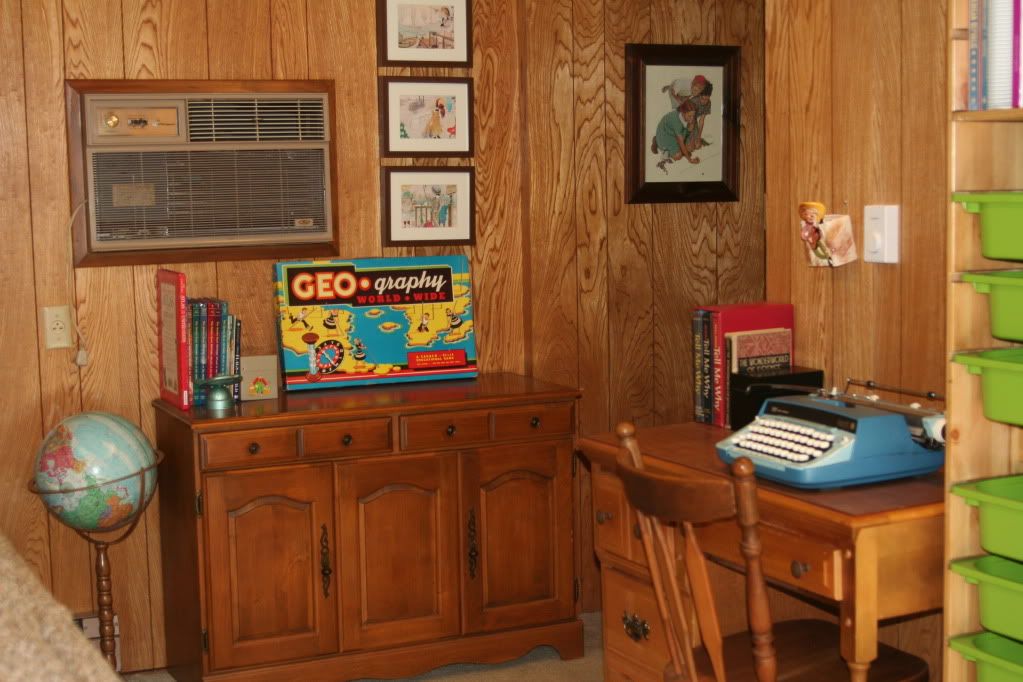
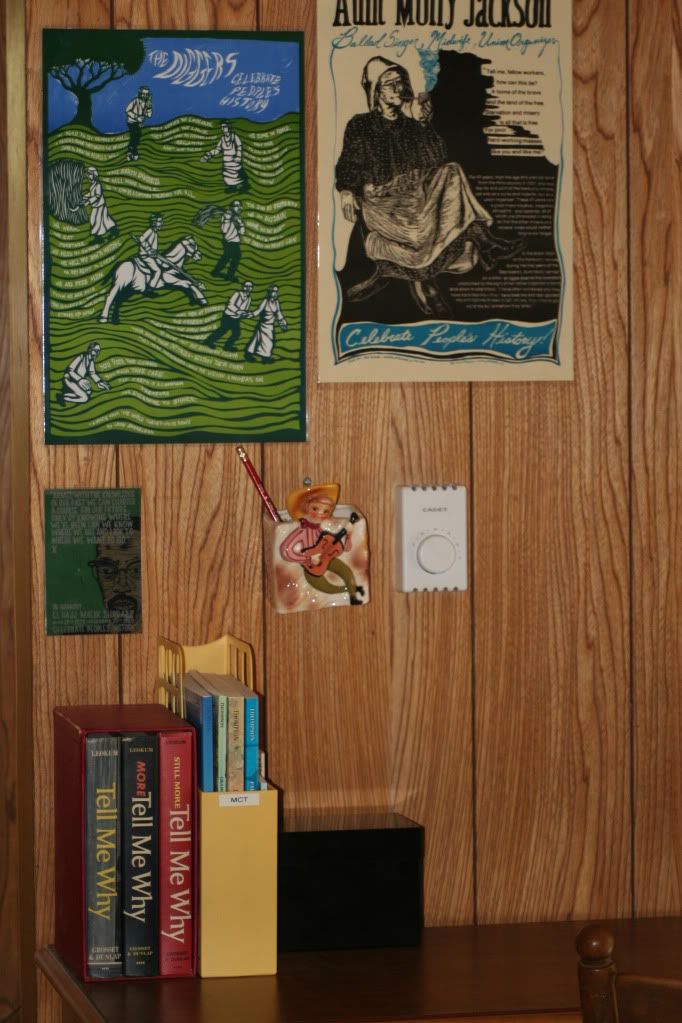
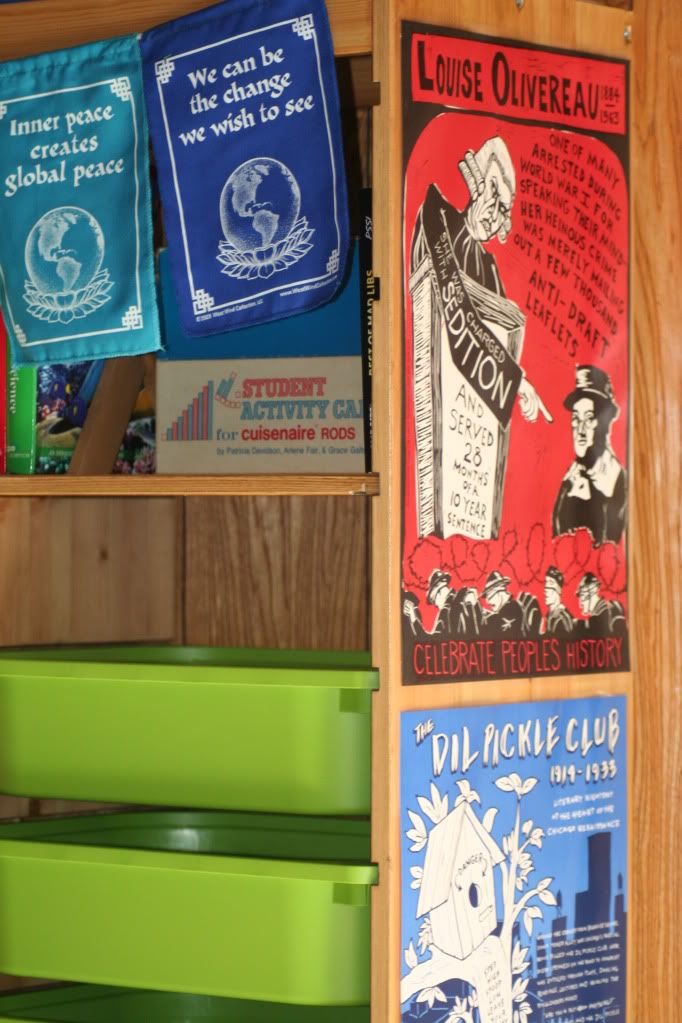
People's History Posters from JustSeeds.org (I laminated these at Lakeshore Learning)
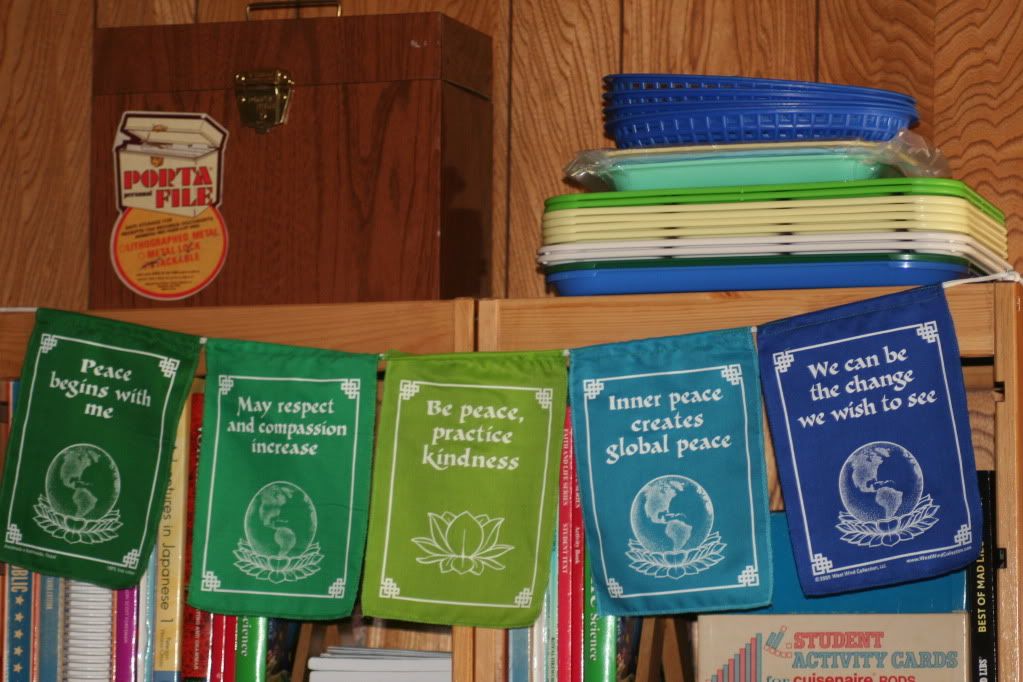
Global Peace Flags from Montessori Services
Every year, there seems to be one subject that I lose my head over. This year it was geography and I spent a good portion of the summer collecting vintage geography games and resources (some of these can also be found on my Pinterest geography board). Ironically, geography was the one subject that I didn't need to plan this year since we'll be using the Geography and Culture Task Cards from Creek Edge Press.

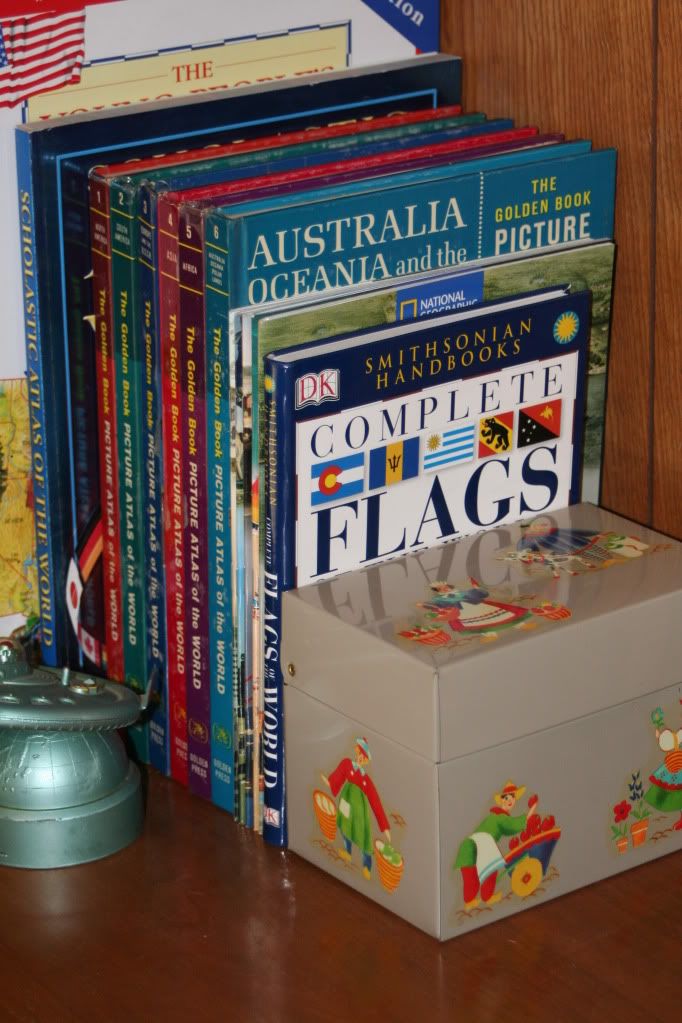
A few of our geography books (with more on the way!)
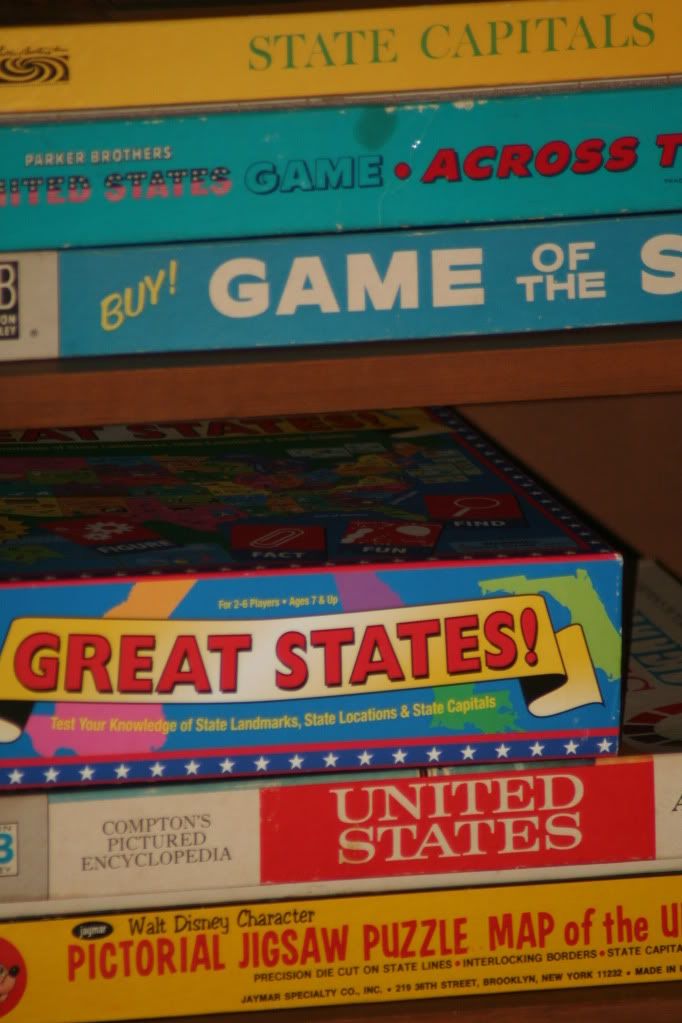
Geography cabinet with a few of my vintage geography games;
stickers and other task card supplies are in the upper drawers of the cabinet.
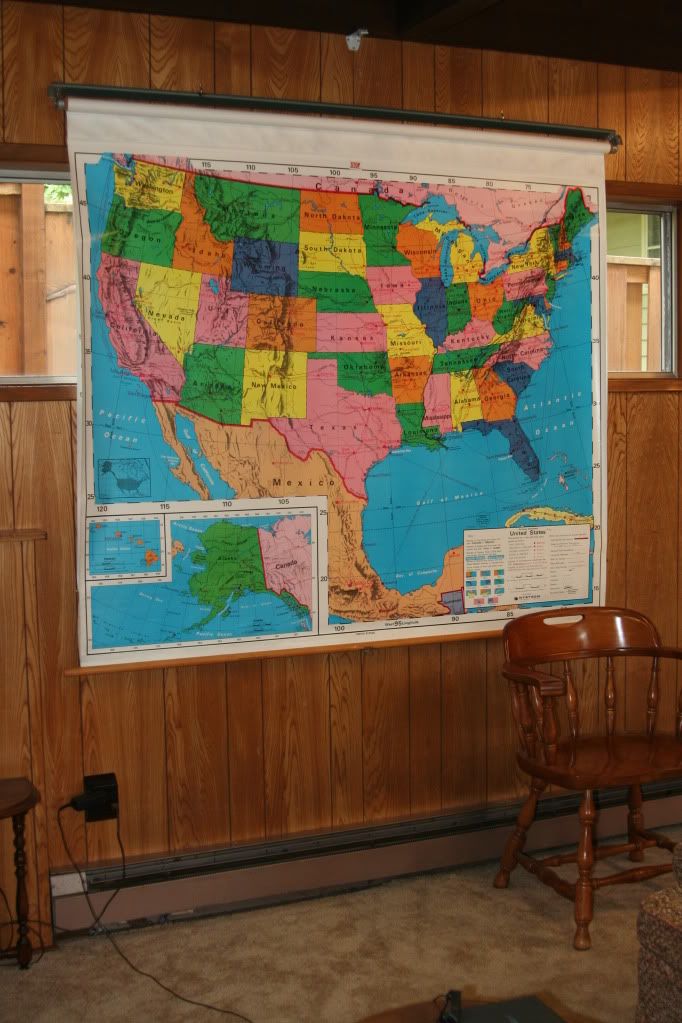
Vintage Nystrom pull down U.S./World maps from CathodeBlue (this doesn't stay down all the time, but it does work well as a partial window shade!)
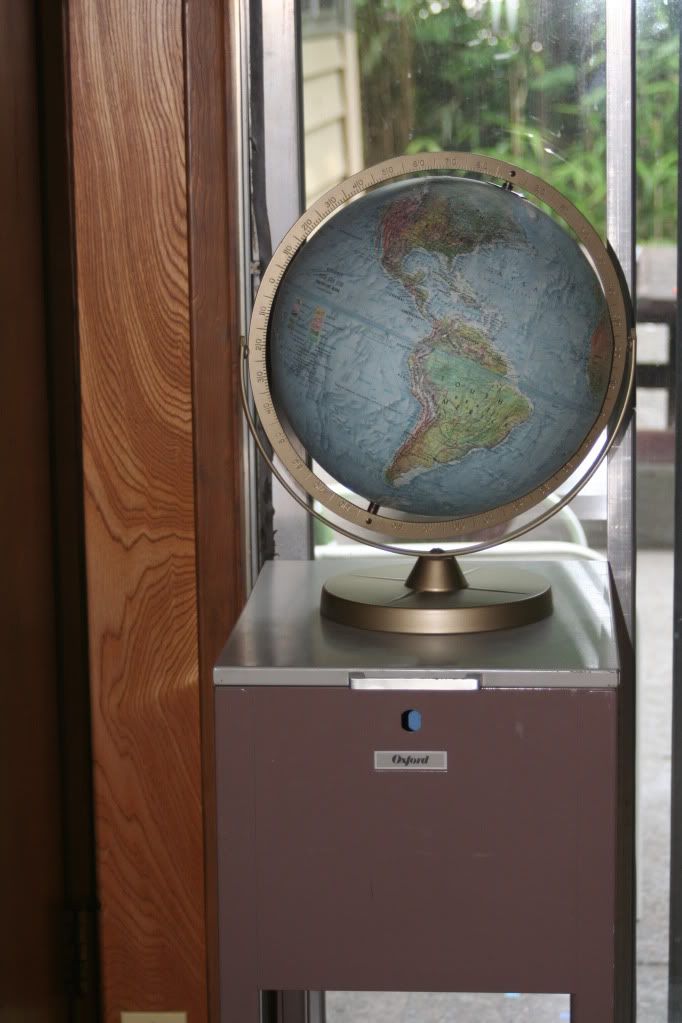
Vintage globe and metal file cart (contains my weekly files)
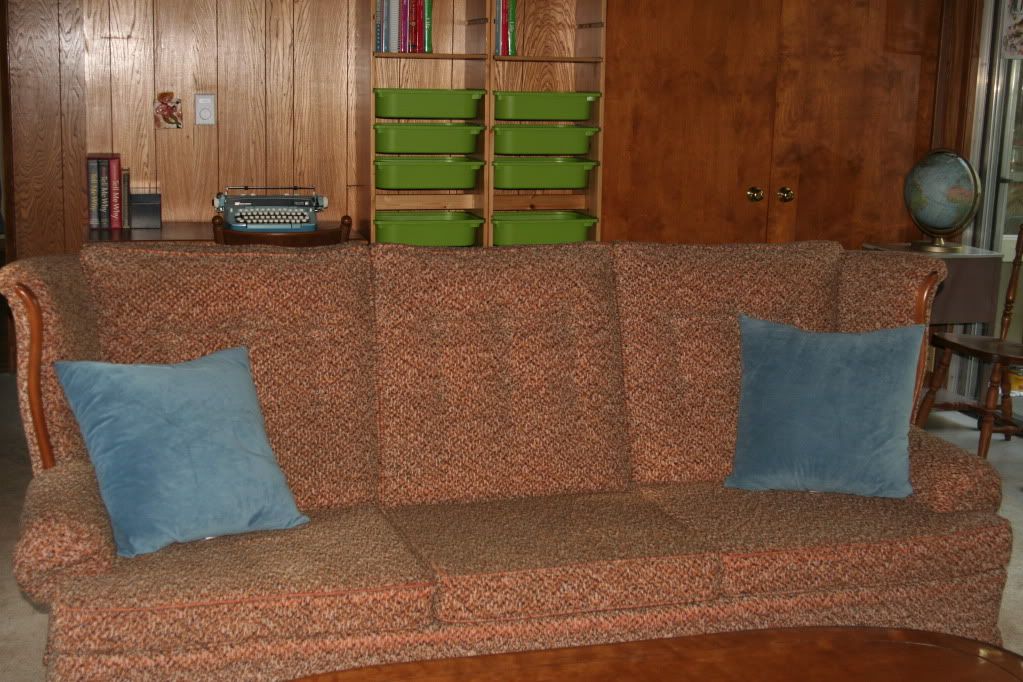
This is probably the ugliest couch ever, but the kids are rather hard on furniture, so I wanted something super inexpensive and durable. It was only $24.99 and looks brand new, though obviously vintage, so it seemed the perfect solution for now.
Behind the couch, to the right of the workboxes, is a huge closet with shelves to the ceiling (there is a staircase on the other side of the wall, so this is the under stair storage area). It looks a mess in the photo below, but is actually fairly well-organized - the left side is mostly games (new and vintage) and the right side contains shelves full of my favorite clear plastic shoeboxes from The Container Store. All of our arts and crafts supplies are stored in these boxes. I have two additional cabinets in the garage which contain extra school supplies, science items, and general overflow.
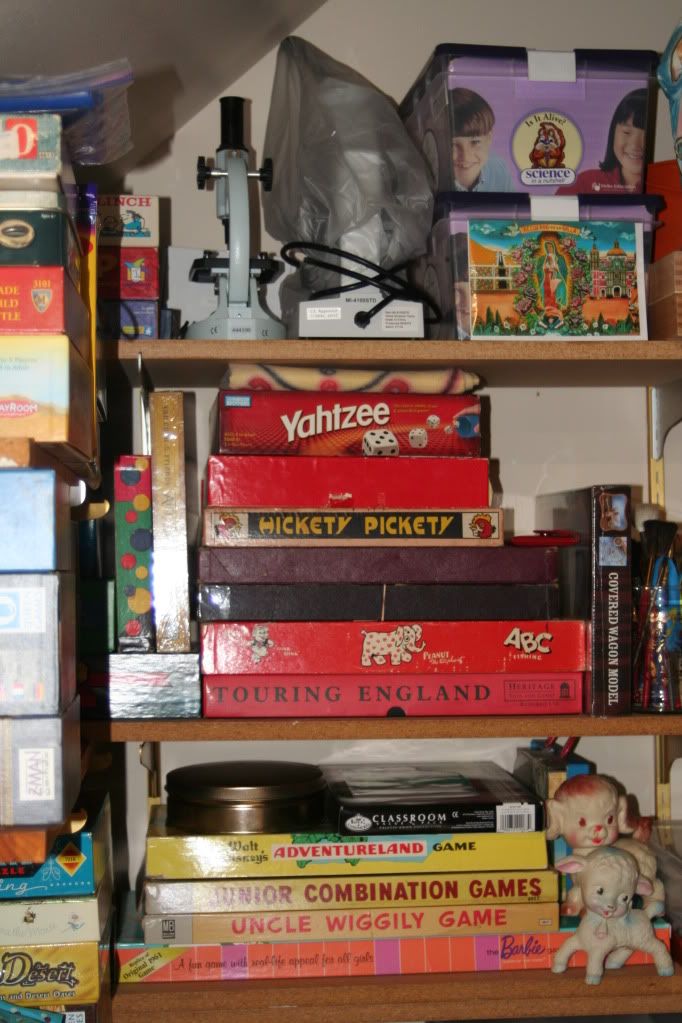
We two have boring blue recliners, flanking either side of a little table and small bookshelf (see below). The line in the paneling, toward the top of the first picture, is actually a ledge that runs halfway around the room - quite useful for displaying things!
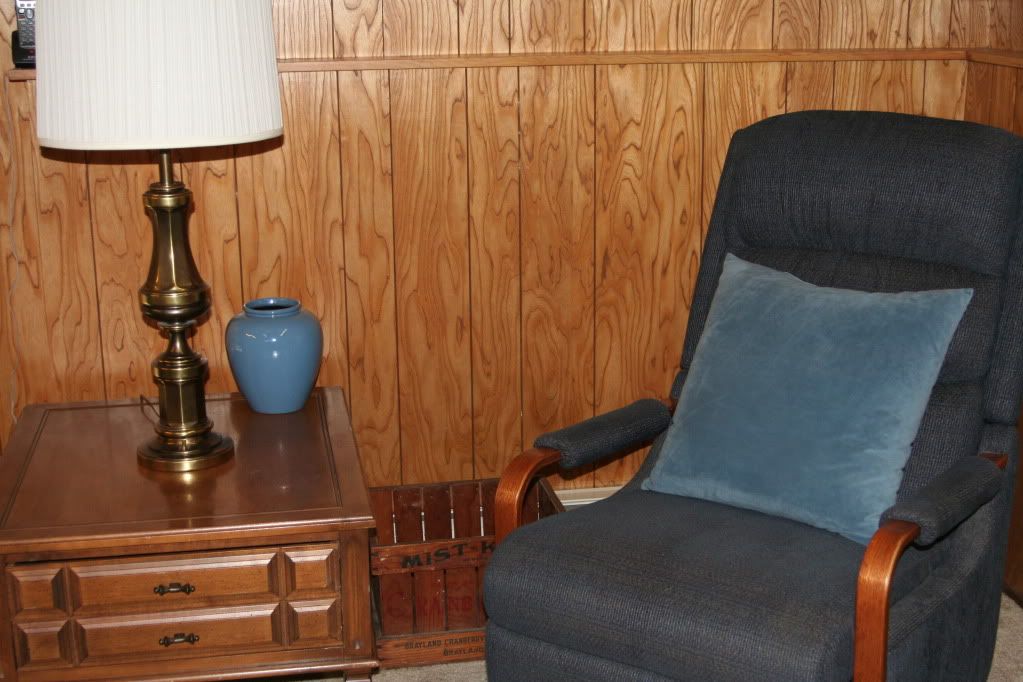
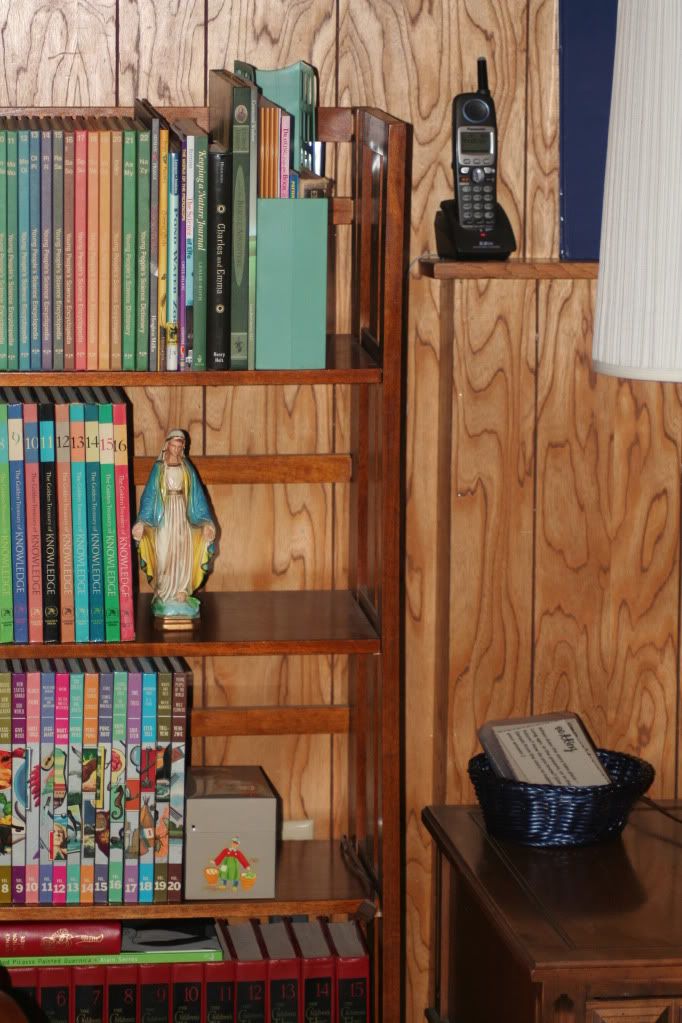
One of the nicest parts of the room is that nearly an entire wall is a sliding glass door. Since wood paneling tends to be dark, I appreciate having such a wonderful source of light in the room! Below is the view onto our patio - and a table so that we can do lessons outdoors when the weather is nice.

Picnic bench for school outdoors (also, the view out of our sliding glass door)
As I'm deep in planning for the upcoming school year, I thought I'd go ahead and share the literature list I've put together for my daughter, though it's not quite complete. She'll be working through much of this list over the next two years.
Books followed by an asterisk (*) indicate that they are the first in an extended series (more than three books), titles in italics denote authors from the UK, and highlighted titles are for my own reference.
- Alice's Adventures in Wonderland (1866) by Lewis Carroll
- Little Women* (1868) by Louisa May Alcott
- At the Back of the North Wind (1871) by George MacDonald
The Princess and the Goblin (1872) by George MacDonald
The Princess and Curdie (1883) by George MacDonald - What Katy Did(1872) by Susan Coolidge
What Katy Did at School (1873) by Susan Coolidge
What Katy Did Next (1886) by Susan Coolidge - Eight Cousins (1875) by Louisa May Alcott
- Black Beauty: The Autobiography of a Horse (1877) by Anna Sewell
- Castle Blair: Volume 1, Volume 2 (1878) by Flora Shaw (Based on the author's own Anglo-Irish childhood in the 1850s-60s)
- Heidi (1884) by Joanna Spyri
- Little Lord Fauntleroy (1886) by Frances Hodgson Burnett
- Five Little Peppers and How They Grew* (1892) by Margaret Sidney
- Seven Little Australians (1894) by Ethel Sybil Turner (Set in Australia during the 1880s)
The Family at Misrule (1895) by Ethel Sybil Turner
Little Mother Meg (1902) by Ethel Sybil Turner - Mrs. Wiggs of the Cabbage Patch (1901) by Alice Hegan Rice
- Five Children and It (1902) by Edith Nesbit
- Rebecca of Sunnybrook Farm (1903) by Kate Douglas Wiggin (Set in 1870s New England)
- The Fortunes of Philippa (1904) by Angela Brazil (one of the first of the "modern schoolgirls' stories")
- A Little Princess (1905) by Frances Burnett Hodgson (free study guide)
- The Railway Children (1906) by Edith Nesbit
- Anne of Green Gables* (1908) by Lucy Maud Montgomery
- The Secret Garden (1909) by Frances Burnett Hodgson (free study guide)
- The Story Girl (1911) by Lucy Maud Montgomery
- Peter Pan (1911) by J.M. Barrie
- Daddy-Long-Legs (1912) by Jean Webster
- Laddie (1913) by Gene Stratton Porter
- Pollyana (1913) by Eleanor H. Porter
Pollyana Grows Up by Eleanor H. Porter - The Story of Doctor Doolittle* (1920) by Hugh Lofting
- Swallows and Amazons* (1929) by Arthur Ransome
- The Country Child (1931) by Alison Uttley (Set in the late 1800s)
- Little House in the Big Woods* (1932) by Laura Ingalls Wilder (Set in 1860s Wisconsin)
- Caddie Woodlawn (1935) by Carol Ryrie Brink (Set in 1860s Wisconsin) (free study guide)
- Roller Skates (1936) by Ruth Sawyer (Set in 1890s New York)
- Ballet Shoes (1936) by Noel Streatfeild
- The Family from One End Street (1937) by Eve Garnett
- Thimble Summer (1938) by Elizabeth Enright
- A Traveller in Time (1939) by Alison Uttley
- Betsy-Tacy* (1940) by Maud Hart Lovelace
- The Wind on the Moon (1944) by Eric Linklater
- Rabbit Hill (1945) by Robert Lawson
- The Mitchells: Five for Victory (1945) by Hilda Van Stockum
Canadian Summer (1948) by Hilda Van Stockum
Friendly Gables (1958) by Hilda Van Stockum - Party Shoes (1946) by Noel Streatfeild
- Strawberry Girl (1946) by Lois Lenski
- Mistress Masham's Repose (1946) by T.H. White
- The Little White Horse (1946) by Elizabeth Goudge
- Adopted Jane (1947) by Helen Fern Daringer (Set in the late 1800s)
- The Doll's House (1947) by Rumer Godden
- All-of-a-Kind-Family (1951) by Sydney Taylor (Set in the early 1900s)
- The Borrowers* (1953) by Mary Norton
- The Children of Green Knowe* by Lucy M. Boston
- Christmas with the Savages (1955) by Mary Clive (Set in Edwardian England)
- Gone Away Lake (1957) by Elizabeth Enright
Return to Gone-Away (1961) by Elizabeth Enright - Tom's Midnight Garden (1958) by Philippa Pearce
- Linnets and Valerians (1964) by Elizabeth Goudge
- Charlotte Sometimes (1969) by Penelope Farmer (Set in 1918 and 1958)
- The Diddakoi (1972) by Rumer Godden
- The House in Norham Gardens (1974) by Penelope Lively
- Going Back (1975) by Penelope Lively (Set during WWII)
Short Stories
- The Golden Age (1895) by Kenneth Grahame
Dream Days (1898) by Kenneth Grahame - Just William* (1922) by Richmal Crompton
- Mary Poppins* (1934) by Dr. P.L. Travers
- The Serial Garden: The Complete Armitage Family Stories (1953+) by Joan Aiken
- The Little Bookroom (1955) by Eleanor Farjeon
Labels: Literature
Benchmark: The student writes narrative text using the writing process.
- The student understands and develops a focused written piece that includes plot elements (e.g. initiating event, rising and falling action, climax, conflict, setting, character development resolution).
- Uses (1) personal experience (2) observations (3) prior knowledge in written text.
- Clarifies the main ideas by selecting relevant details that enrich the central theme or storyline.
- Analyzes and understands implications of plagiarism (e.g. ethical, legal).
- Understands and independently uses appropriate strategies to generate narrative text (e.g. brainstorming, listing, webbing, identifying information from print sources).
- Writes a piece with an inviting introduction, appropriate body, and satisfying conclusion that leaves the reader with a sense of resolution.
- Selects transitions to connect ideas within and between paragraphs in the writing piece.
- Selects original and compelling vocabulary and/or figurative language appropriate for the purpose and audience.
- Selects words that are suitable and precise, which create appropriate imagery (e.g. explicit nouns, vivid verbs, natural modifiers).
- Word Painting: A Guide to Write More Descriptively by Rebecca McClanahan
- Includes vocabulary particular to the topic and provides ease of understanding.
- Varies sentence structures and lengths (e.g. simple, compound, complex).
- The Art of Styling Sentences by K.D. Sullivan
- Sentence Composing for Middle School: A Worktext on Sentence Variety and Maturity by Don Killgallson
- Develops a variety of sentence beginnings that build upon previous sentence to guide the reader from one sentence to another.
- Identifies and avoids writing sentence fragments.
- Writes using effective dialogue that sounds conversational and natural.
- Demonstrates correct use of mechanics and punctuation (e.g. semi-colons, colons, underlining, italics, and centered titles).
- A Writer's Guide to Perfect Punctuation by Victor C. Pellegrino
- Uses correct grammar and usage for clarity.
- Spells familiar and most unfamiliar words correctly and uses available resources (e.g. dictionary, spell check).
- Uses correct paragraph divisions to reinforce the organizational structure of the text.
- A Writer's Guide to Powerful Paragraphs by Victor C. Pellegrino
- Paragraph Construction Sandwich Chart: Graphic Organizer from Education Place
- Adventures in Fantasy: Lessons and Activities in Narrative and Descriptive Writing, Grades 5-9 by John Gust
- Teaching the Story: Fiction Writing in Grades 4-8 by Carol Baldwin
- Traits of Writing: The Complete Guide for Middle School by Ruth Culham
- Writers Inc: A Student Handbook for Writing and Learning by Patrick Sebranek, Dave Kemper, and Verne Meyer
Labels: Writing
It's been a crazy summer with our BIG move from Kansas to Oregon, but now we are (finally!) settled in and starting to think about the upcoming school year. First, a little about our new (old) house.
I knew from the start that I wanted house from the 1950s, with as many original features as possible (tricky, since we're renting now). Since I'm obsessed with all things vintage, my goal was to find a house where my various collections would fit in nicely.
Prior to our move, I spent months studying every single post at Retro Renovation, pouring over images on Flickr (and yes, even Ugly House Photos), and collecting decorating books from the 1950s and 60s. I also sold or gave away nearly every piece of furniture that we had so that we could make a fresh start.
And then finally, we found our house - a charming, spacious 5-bedroom 1958 [semi] ranch-style home in gorgeous Lake Oswego, Oregon. The number one selling point? The original pink American Standard bathroom (see: Save the Pink Bathrooms). I also adored its massive kitchen, numerous large windows (including two with tiled window seats, perfect for reading!), the woodsy backyard, and yes, even the original wood paneling in the family room. After jumping through numerous hoops, the house was ours and we commenced our move.
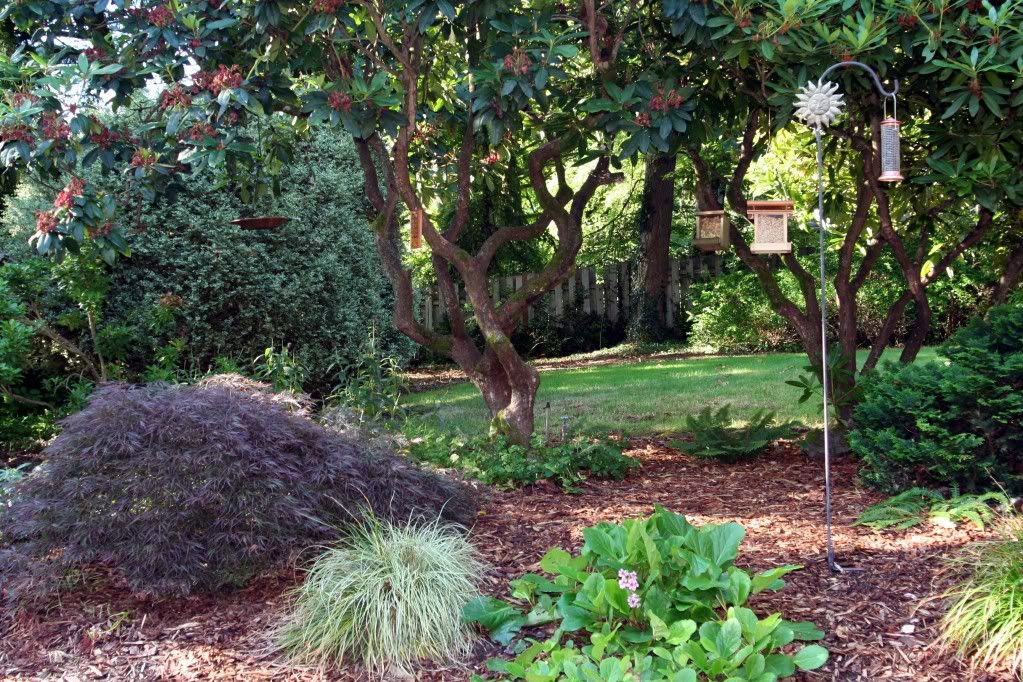
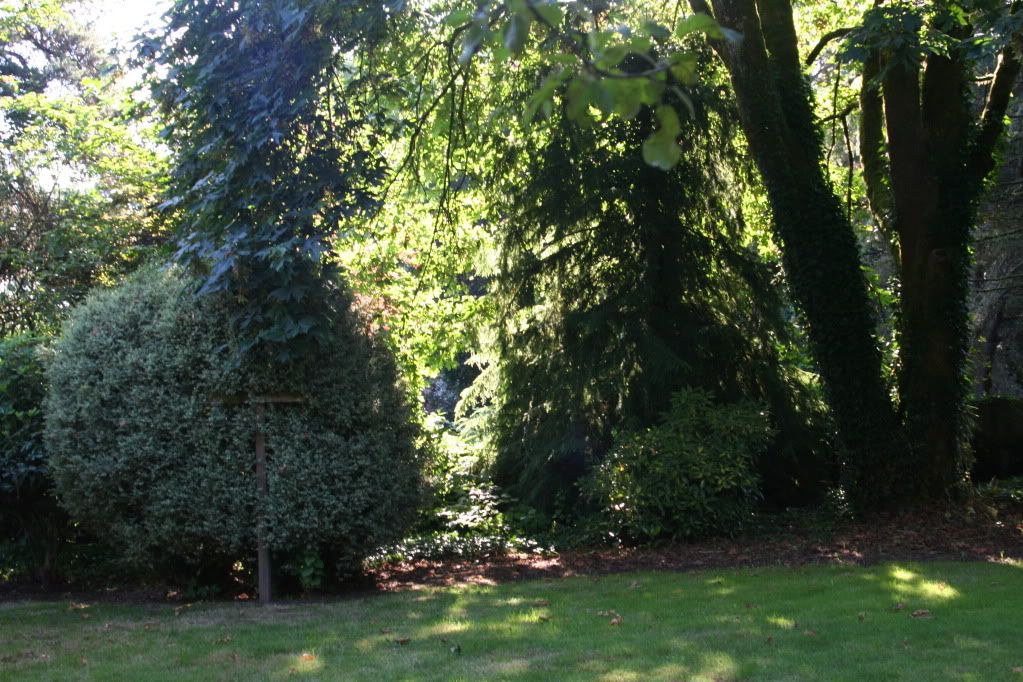
The Backyard
Now, as I've said, we're mostly settled in and loving our new home. There are a few "issues" here - the internet doesn't work well in the downstairs bedrooms, no matter what we do (and we've tried everything!), our lovely pink bathroom isn't exactly pink after all, but more of a peach-pink (very hard to color match, though Land's End does make towels in a very similar shade!)...also, the toilet is missing its matching pink seat, but just today I found a replacement solution here. Oh, and our yard is so shaded that I'm afraid I'll have little luck with roses here (I'm dearly missing the 50+ rose bushes I left behind in Kansas!).

Part of the kitchen (just prior to moving in)

One corner of the living room (just prior to moving in)
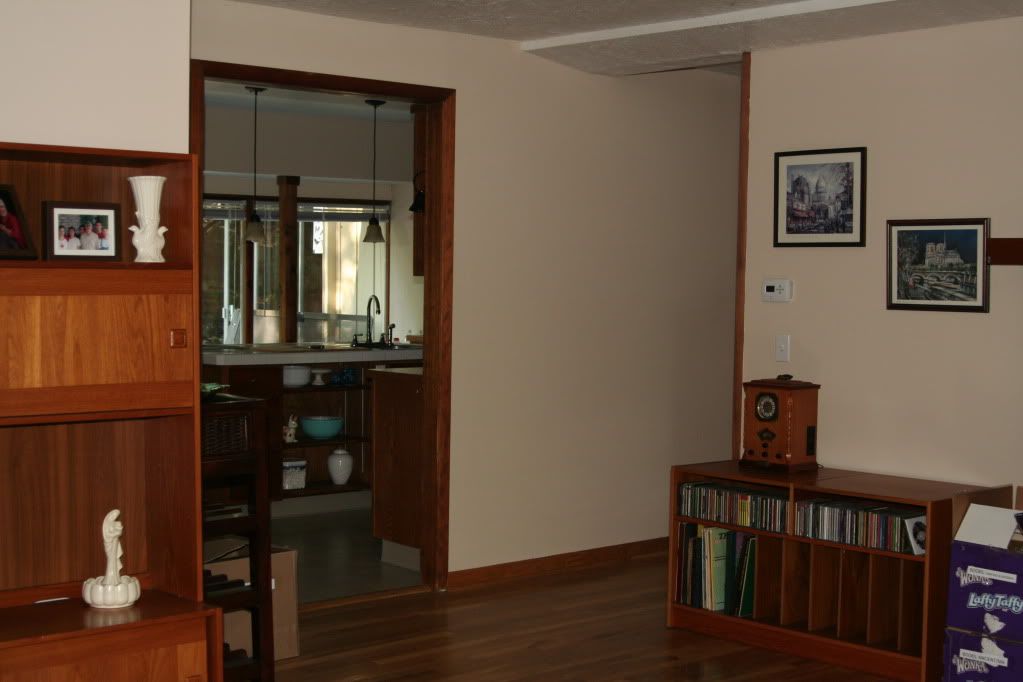
View from the living room into the kitchen (please excuse the boxes in the corner!)
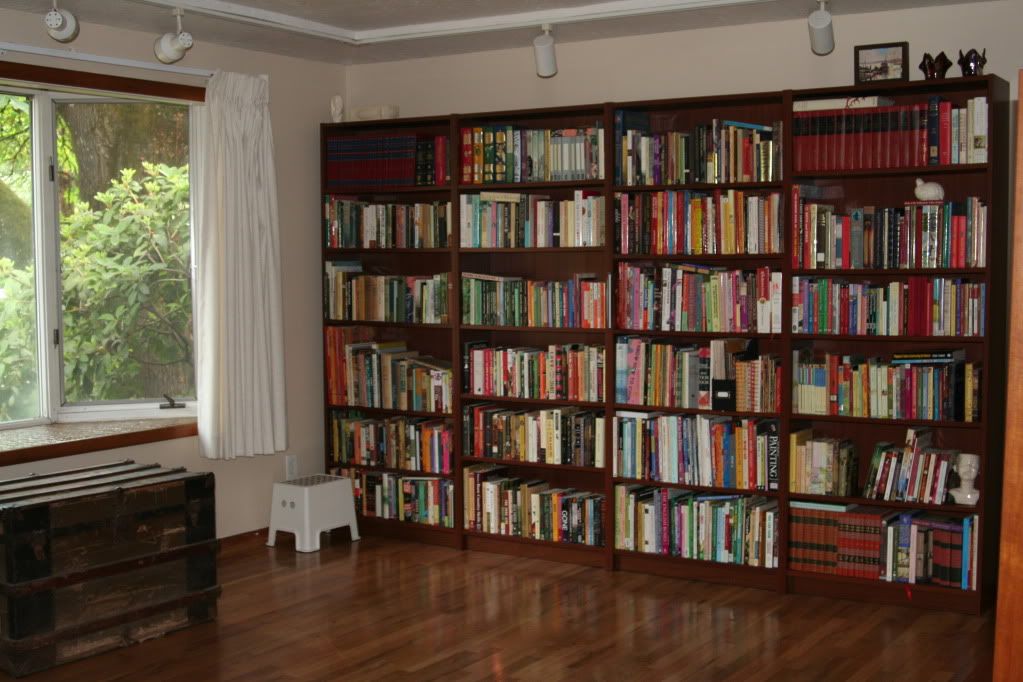
Another corner of the living room: our wall of Ikea Billy bookcases
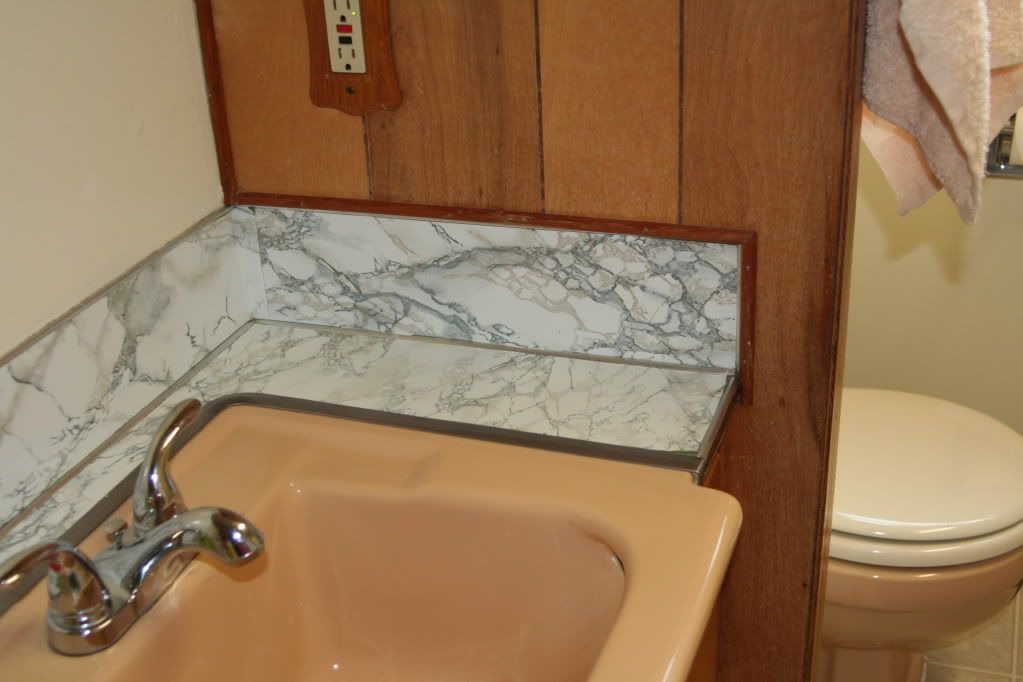
Pink Bathroom!
Nevertheless, I wouldn't want to be anywhere else. It blows my mind just how beautiful it is here! We're still working on new (old) furniture, but the kids' bedrooms are done, thanks to Ikea, and the family room/school room is mostly finished as well. We found a great Danish modern dining table that will seat up to twelve people (!) - and are now waiting on a set of chairs to materialize. Sadly it does not match my very traditional-looking china hutch, but Danish modern is the look I was orginally after, so that's what we got. I've been scouring thrift stores and vintage stores almost daily to find the perfect furnishings, plus all of the little extras (like pinch pleat drapes for all our windows) and that has been both thrilling and frustrating. Fortunately, the house has tons of storage space (closets everywhere!) and for the first time ever, we all "fit" without being crowded for space.
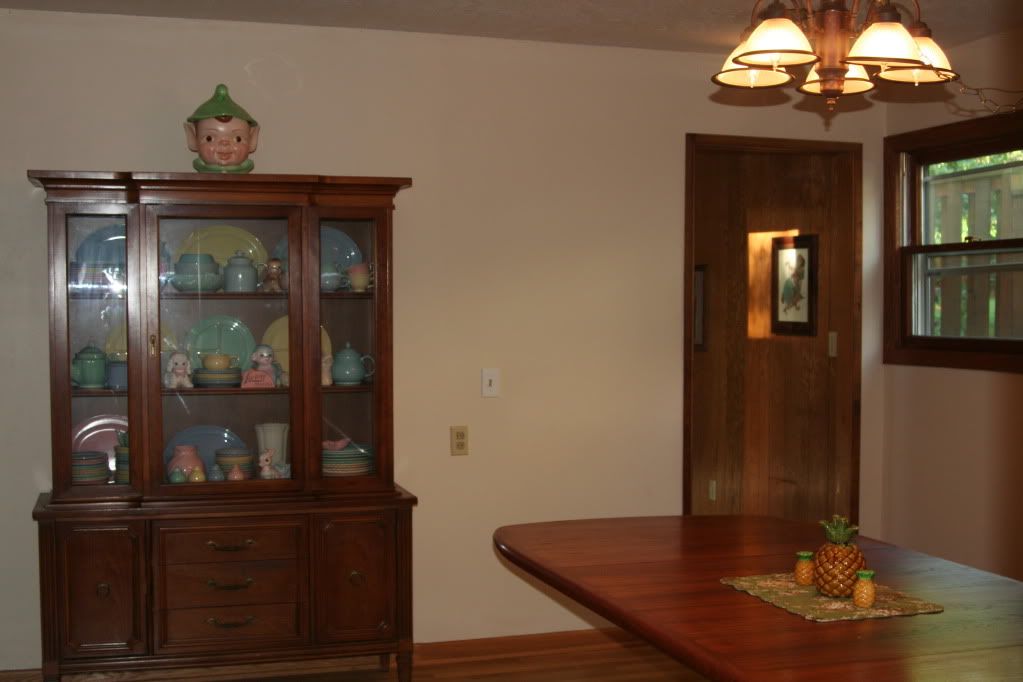
A corner of the dining room
